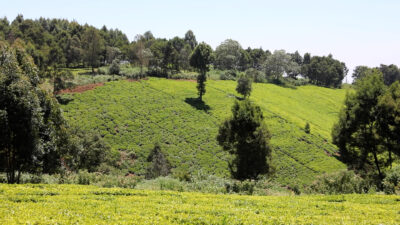News
View the original of this guest post at Palladium.
By Erin Leyson & Olivia Morgan
Few would think of geomapping as the answer to smallholder farmers’ poverty wages, but a new report by Small Foundation and Palladium suggests that could be the case.
There are an estimated 570 million smallholder farmers globally that produce about 35 percent of global food supplies, and almost 80 percent of food in emerging markets. Despite these important contributions, they represent the majority of the population living in extreme poverty.
On average, smallholder farmers require up to double an improvement in income to earn the equivalent of a living wage. Meaningfully improving their incomes involves the transformation of food systems through increased farm productivity, adoption of climate-resilient strategies, and more efficient market linkages – all of which require financing.
Unfortunately, 90 percent of smallholder farmers have no access to financing.
Historically, financial institutions and other intermediaries have been reluctant to lend to smallholder farmers because they lack the tools to cost-effectively gather accurate information (such as plot location, historic yields and crop outlook), quantify the risks associated with this information, and actively monitor the progress of the growing season. These challenges have resulted in a USD 170 billion financing gap in the smallholder agricultural sector.
Improving Livelihoods through Technology
A new report by Small Foundation and Palladium looks at the viability of geomapping as a tool to close the smallholder farmers’ financing gap and improve their livelihoods.
Geomapping is the process of collecting location information, typically with a GPS system and using it to assemble a map. For a technology provider like SyeComp, geomapping means sending field personnel out to map boundaries using a rugged, handheld GPS and then generating detailed maps. The report examines how companies like SyeComp use geomapping data to assess smallholder farmers’ risk and offers recommendations for scaling its use, with the ultimate goal of increasing smallholder farmers’ access to finance and creating pathways out of poverty.
The newly published research also indicates that geomapping technology providers within the agriculture sector are most differentiated by their specific customer segment, offering services directly to smallholder farmers or indirectly through financial institutions (FIs) or agribusinesses.
However, no matter their business model, most offer value to many stakeholders in a given value chain, either through geomapping information for FIs, market pricing information for farmers, or yield estimations for cooperatives. “Because geomapping providers are able to generate value for multiple stakeholders, their use offers a real opportunity to transform the financing landscape for smallholder farmers,” explains Eduardo Tugendhat, Palladium Director of Thought Leadership.
The report highlights how geomapping technology providers add value to the operations of financial institutions, agribusinesses, and cooperatives, and most importantly to the farmers themselves. For FIs, geomapping provides a critical, yet missing piece of the puzzle in a credit assessment—farm size and location. This information allows FIs to better understand potential yield, which they can use to modify a loan value and repayment terms. When providers overlay location information with climate risk maps, even more opportunities open for climate financing.
For agribusinesses such as product buyers, food processors and input suppliers, geomapping offers the added benefits of understanding where a farmer is located to make product collection more efficient, reduce the pestilence risk of certain farms to avoid product loss, and ensure product traceability.
Most importantly, geomapping providers deliver benefits to smallholder farmers by giving them access to locally tailored weather information, market and pricing data, and crop advice that assists farmers in achieving higher yields and getting their crops to the right buyers.
Breaking Down Barriers to Capital
So, if the benefits of geomapping are clear and widespread, why don’t more smallholder farmers and the institutions that serve them use geomapping technology?
According to the report, the barriers include knowledge, capital, and training. Most FIs Palladium spoke to lack awareness of geomapping technology offerings as well as the value-add it can deliver to their lending activities.
Meanwhile, technology providers need capital to grow their operations and intermediaries need capital to adopt geomapping solutions and demonstrate a proof of concept for long-term uptake. Finally, both technology providers and intermediaries require skilled professionals to implement geomapping solutions and market them to users.
“With the right incentives, geomapping technology uptake can be increased across intermediaries – agribusinesses, cooperatives, microfinance institutions, financial institutions, start-ups – enabling both intermediaries and smallholder farmers to thrive with increased data, transparency and understanding,” adds Tugendhat.
With this new information in mind, Palladium believes that a finance facility could provide such incentives, by offering both financing and technical assistance to technology providers and intermediaries. Such a facility would be uniquely positioned to address technology providers’ barriers to scale and demonstrate proofs of concept to intermediaries. “By working at the ecosystem level, this investment could leverage geomapping at scale and finally provide the step change in incomes that smallholder farmers need to move out of poverty,” Tugendhat concludes.
Download the report and contact info@thepalladiumgroup.com for more information.
You can also find the report on our Learning & Impact page under ‘Research we have Funded’.




